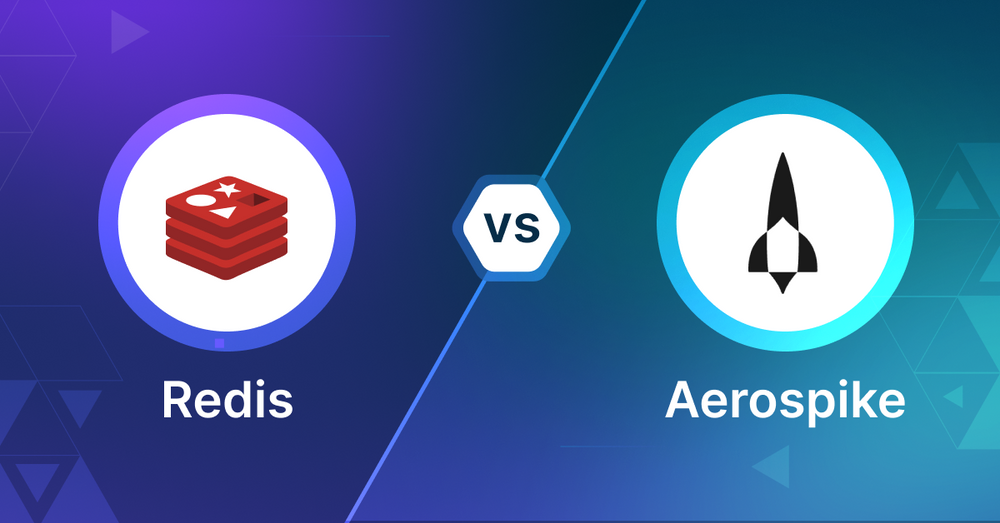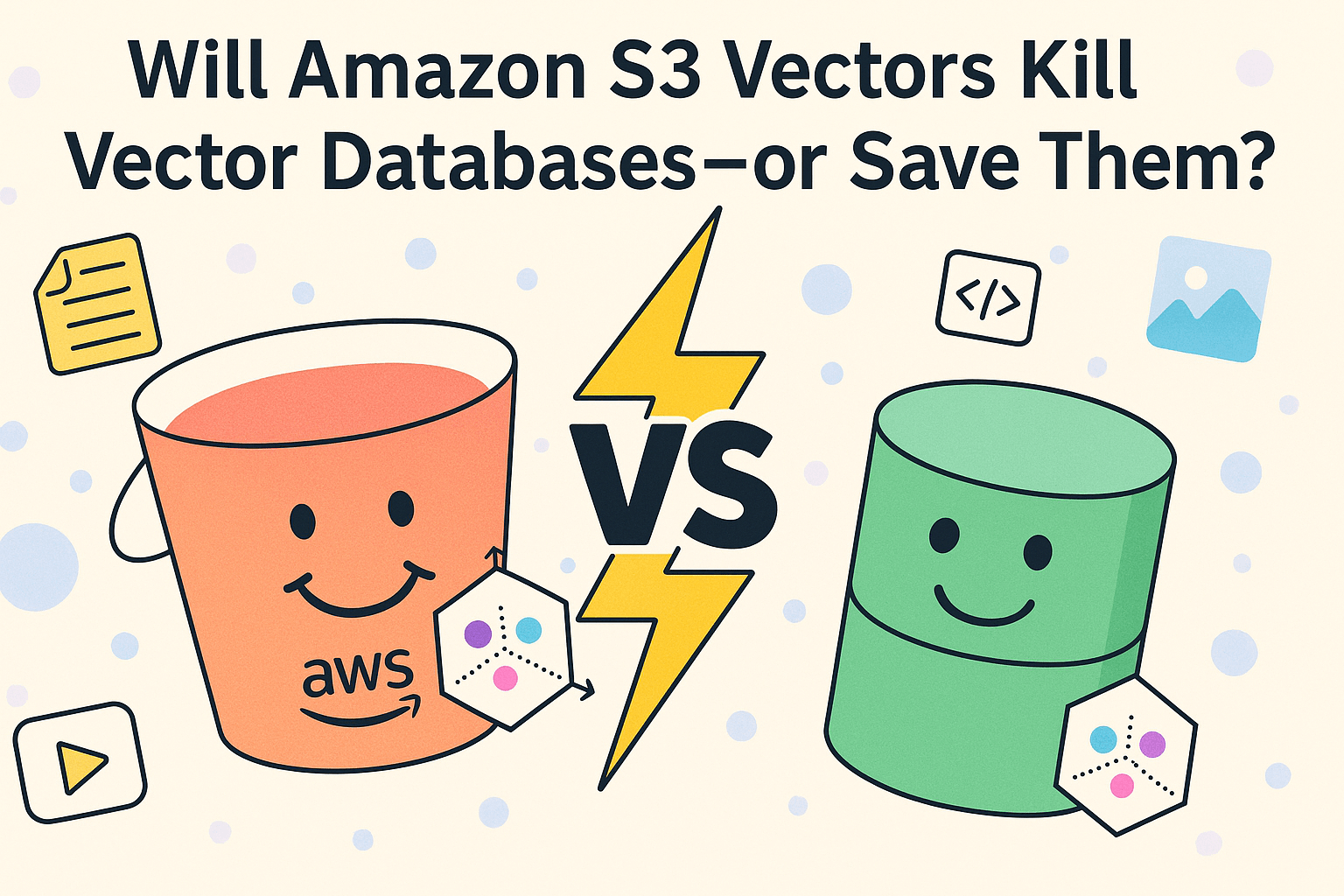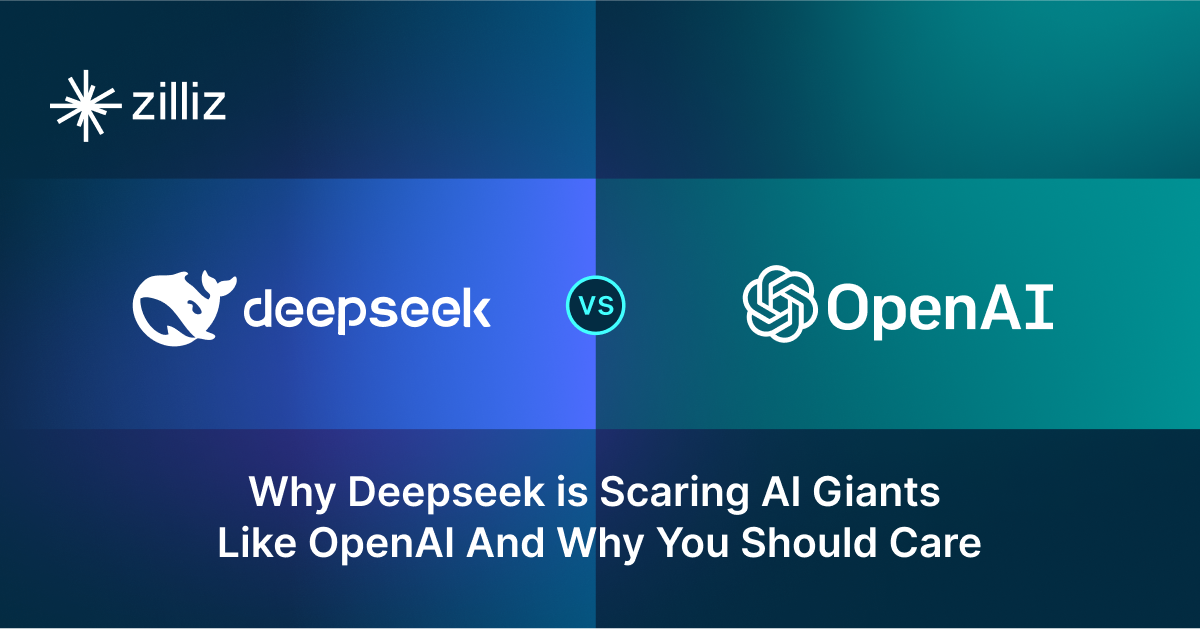Redis vs Aerospike: Choosing the Right Vector Database for Your Needs

As AI and data-driven technologies advance, selecting an appropriate vector database for your application is becoming increasingly important. Redis and Aerospike are two options in this space. This article compares these technologies to help you make an informed decision for your project.
What is a Vector Database?
Before we compare Redis and Aerospike, let's first explore the concept of vector databases.
A vector database is specifically designed to store and query high-dimensional vectors, which are numerical representations of unstructured data. These vectors encode complex information, such as the semantic meaning of text, the visual features of images, or product attributes. By enabling efficient similarity searches, vector databases play a pivotal role in AI applications, allowing for more advanced data analysis and retrieval.
Common use cases for vector databases include e-commerce product recommendations, content discovery platforms, anomaly detection in cybersecurity, medical image analysis, and natural language processing (NLP) tasks. They also play a crucial role in Retrieval Augmented Generation (RAG), a technique that enhances the performance of large language models (LLMs) by providing external knowledge to reduce issues like AI hallucinations.
There are many types of vector databases available in the market, including:
- Purpose-built vector databases such as Milvus, Zilliz Cloud (fully managed Milvus), and Weaviate
- Vector search libraries such as Faiss and Annoy.
- Lightweight vector databases such as Chroma and Milvus Lite.
- Traditional databases with vector search add-ons capable of performing small-scale vector searches.
Redis is an in-memory database and Aerospike is a distributed, scalable NoSQL database. Both have vector search capabilities as an add-on. This post compares their vector search capabilities.
Redis: Overview and Core Technology
Redis was originally known for its in-memory data storage and has added vector search capabilities through the Redis Vector Library which is now part of Redis Stack. This allows Redis to do vector similarity search while keeping its speed and performance.
The vector search in Redis is built on top of its existing infrastructure, using in-memory processing for fast query execution. Redis uses FLAT and HNSW (Hierarchical Navigable Small World) algorithms for approximate nearest neighbor search which allows for fast and accurate search in high dimensional vector spaces.
One of the main strengths of Redis vector search is that it can combine vector similarity search with traditional filtering on other attributes. This hybrid search allows developers to create complex queries that consider both semantic similarity and specific metadata criteria, so it’s versatile for many AI driven applications.
The Redis Vector Library provides a simple interface for developers to work with vector data in Redis. It has features like flexible schema design, custom vector queries and extensions for LLM related tasks like semantic caching and session management. This makes it easier for AI/ML engineers and data scientists to integrate Redis into their AI workflow, especially for real-time data processing and retrieval.
What is Aerospike? An Overview
Aerospike is a NoSQL database for high-performance real-time applications. It has added support for vector indexing and searching so it’s suitable for vector database use cases. The vector capability is called Aerospike Vector Search (AVS) and is in Preview. You can request early access from Aerospike.
AVS only supports Hierarchical Navigable Small World (HNSW) indexes for vector search. When updates or inserts are made in AVS, record data including the vector is written to the Aerospike Database (ASDB) and is immediately visible. For indexing, each record must have at least one vector in the specified vector field of an index. You can have multiple vectors and indexes for a single record so you can search on the same data in different ways. Aerospike recommends assigning upserted records to a specific set so you can monitor and operate on them.
AVS has a unique way of building the index, it’s concurrent across all AVS nodes. While vector record updates are written directly to ASDB, index records are processed asynchronously from an indexing queue. This is done in batches and distributed across all AVS nodes, so it uses all the CPU cores in the AVS cluster and is scalable. Ingestion performance is highly dependent on host memory and storage layer configuration.
For each item in the indexing queue, AVS processes the vector for indexing, builds the clusters for each vector and commits those to ASDB. An index record contains a copy of the vector itself and the clusters for that vector at a given layer of the HNSW graph. Indexing uses vector extensions (AVX) for single instruction, multiple data parallel processing.
AVS queries during ingestion to “pre-hydrate” the index cache because records in the clusters are interconnected. These queries are not counted as query requests but show up as reads against the storage layer. This way, the cache is populated with relevant data and can improve query performance. This shows how AVS handles vector data and builds indexes for similarity search so it can scale for high-dimensional vector searches.
Key Differences: Choosing between Redis and Aerospike for Vector Search
When choosing a vector search tool, knowing the differences between Redis and Aerospike will help you make a decision. Both have vector search, but they are different. Let’s compare them across several areas.
Search Methodology
Redis uses FLAT and HNSW (Hierarchical Navigable Small World) algorithms for approximate nearest neighbor search. Fast and accurate search in high dimensional vector space. Redis also supports hybrid search, combining vector similarity with attribute filtering.
Aerospike Vector Search (AVS) only uses HNSW indexes for vector search. It updates vector records asynchronously and builds clusters for each vector across all AVS nodes in the cluster.
Data
Redis is great at handling structured and semi-structured data. The Vector Library integrates with Redis existing data structures so you can have flexible schema and custom vector queries.
Aerospike supports multiple vectors and indexes for a single record. You can have different search methods on the same data. It recommends to upsert records to specific sets for easier monitoring and operations.
Scalability and Performance
Redis uses in-memory processing for fast query execution so it’s great for real-time applications. Vector search is built on top of existing infrastructure so Redis is still fast.
Aerospike indexing is distributed across all AVS nodes, uses all CPU cores in the cluster. This is for scalability, especially for high dimensional vector search. But ingestion performance depends on host memory and storage layer configuration.
Flexibility and Customization
Redis has a simple interface for vector data so you can create complex queries that consider semantic similarity and specific metadata. It also has extensions for LLM related tasks like semantic caching and session management.
Aerospike allows multiple vectors and indexes per record. You have flexibility in how to search the data. But details on customization options are limited in the preview.
Integration and Ecosystem
Redis has a mature ecosystem and integrates well with many tools and frameworks, especially in AI/ML workflows. The Vector Library is designed to fit in with the existing Redis setup.
Aerospike vector search is newer and information on specific integrations is limited. But as a NoSQL database it probably has integration with common data processing tools.
Ease of Use
Redis is known for simplicity and has a lot of documentation. The Vector Library maintains that simplicity, so it might be more accessible for developers who are already familiar with Redis.
Aerospike vector search is in preview, so it might have less documentation and steeper learning curve for now. But that might change as the feature matures.
Cost
Redis has open-source and enterprise options with multiple pricing models for cloud and managed services.
Aerospike is targeting enterprise so that might reflect in the pricing. Cost details for vector search are not publicly available yet.
Security
Redis has security features like encryption, authentication and access control which applies to vector search.
Aerospike as an enterprise focused solution probably has robust security features but details on security for vector search is not available in the preview.
When to Choose Each Technology
Redis is great for applications that need real-time vector search and traditional data operations. In-memory and hybrid search make it perfect for low-latency scenarios like recommendation systems, content matching or personalized search features. Redis is good for use cases that benefit from its flexibility in data modeling and can do complex queries on both vector similarity and metadata. It’s great for AI applications that need to integrate vector search with other Redis features like caching and session management.
Aerospike Vector Search (AVS) is better for high scalability and high performance with large datasets especially when dealing with high dimensional vectors. Its distributed indexing across all nodes in the cluster makes it a good fit for applications that need to handle massive amounts of vector data. Aerospike might be the choice for use cases that need a NoSQL database with vector search built in like large scale machine learning model serving, real-time fraud detection systems or advanced analytics platforms that process and query multi-dimensional data.
Conclusion
Redis is versatile with fast in-memory and flexible data modeling and hybrid search. It has an established ecosystem and is easy to use so it’s a good fit for many vector search use cases. Aerospike is good for scalability and performance for high dimensional vector searches, it’s distributed architecture can handle large datasets. Choose between Redis and Aerospike based on your use case, data volume, performance requirements and existing technology stack. Choose Redis if you need a flexible and fast solution that integrates well with many AI workflows especially for real-time applications. Choose Aerospike if you need to handle large scale high dimensional vector data with focus on scalability and performance. Ultimately the best choice will be the one that fits your project’s unique needs and long term scalability requirements.
While this article provides an overview of Redis and Aerospike, it's key to evaluate these databases based on your specific use case. One tool that can assist in this process is VectorDBBench, an open-source benchmarking tool designed for comparing vector database performance. Ultimately, thorough benchmarking with specific datasets and query patterns will be essential in making an informed decision between these two powerful, yet distinct, approaches to vector search in distributed database systems.
Using Open-source VectorDBBench to Evaluate and Compare Vector Databases on Your Own
VectorDBBench is an open-source benchmarking tool designed for users who require high-performance data storage and retrieval systems, particularly vector databases. This tool allows users to test and compare the performance of different vector database systems such as Milvus and Zilliz Cloud (the managed Milvus) using their own datasets and determine the most suitable one for their use cases. Using VectorDBBench, users can make informed decisions based on the actual vector database performance rather than relying on marketing claims or anecdotal evidence.
VectorDBBench is written in Python and licensed under the MIT open-source license, meaning anyone can freely use, modify, and distribute it. The tool is actively maintained by a community of developers committed to improving its features and performance.
Download VectorDBBench from its GitHub repository to reproduce our benchmark results or obtain performance results on your own datasets.
Take a quick look at the performance of mainstream vector databases on the VectorDBBench Leaderboard.
Read the following blogs to learn more about vector database evaluation.
Further Resources about VectorDB, GenAI, and ML
- What is a Vector Database?
- Redis: Overview and Core Technology
- What is Aerospike**? An Overview**
- Key Differences: Choosing between Redis and Aerospike for Vector Search
- **When to Choose Each Technology**
- Conclusion
- Using Open-source VectorDBBench to Evaluate and Compare Vector Databases on Your Own
- Further Resources about VectorDB, GenAI, and ML
Content
Start Free, Scale Easily
Try the fully-managed vector database built for your GenAI applications.
Try Zilliz Cloud for FreeKeep Reading

Will Amazon S3 Vectors Kill Vector Databases—or Save Them?
AWS S3 Vectors aims for 90% cost savings for vector storage. But will it kill vectordbs like Milvus? A deep dive into costs, limits, and the future of tiered storage.

Why I’m Against Claude Code’s Grep-Only Retrieval? It Just Burns Too Many Tokens
Learn how vector-based code retrieval cuts Claude Code token consumption by 40%. Open-source solution with easy MCP integration. Try claude-context today.

Why Deepseek is Waking up AI Giants Like OpenAI And Why You Should Care
Discover how DeepSeek R1's open-source AI model with superior reasoning capabilities and lower costs is disrupting the AI landscape and challenging tech giants like OpenAI.
The Definitive Guide to Choosing a Vector Database
Overwhelmed by all the options? Learn key features to look for & how to evaluate with your own data. Choose with confidence.